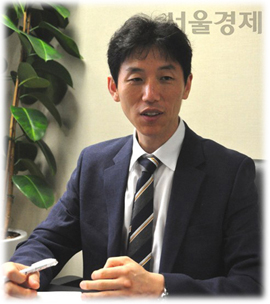| 일 | 월 | 화 | 수 | 목 | 금 | 토 |
|---|---|---|---|---|---|---|
| 1 | 2 | 3 | 4 | 5 | ||
| 6 | 7 | 8 | 9 | 10 | 11 | 12 |
| 13 | 14 | 15 | 16 | 17 | 18 | 19 |
| 20 | 21 | 22 | 23 | 24 | 25 | 26 |
| 27 | 28 | 29 | 30 | 31 |
- power and organization
- new political science
- Orderliness of Choice
- Regime Change
- Political Regime
- survival process theory
- Samjae Capacity
- Task Delegates of the Ruler: Inner Circle
- 1st Law of politics
- political phenomena
- Samjae Capacities
- Order of Choice
- Political power
- Cohesion Force
- Canonical Politics
- Mathematical Model of politics
- mechanism of politics
- the 2nd law
- Value Systems
- Political Change
- Political Regimes
- politics
- politics and war
- Operation of the 2nd Law
- political organization
- Differences in Individual Abilities and Tendencies
- the 3rd Law of politics
- Mathematical Model of political science
- politics of Inner Circle
- Power
- Today
- Total
New Political Science
b. ㉡ Important Aspects of the 2nd Law 본문
㉡ Important Aspects of the 2nd Law
Let's take a look again at some important aspects of the 2nd law that we have discussed so far.
[Ch.3.216] Firstly, in general, the bigger an invasion threat to a political organization, the bigger its cohesion force increases in proportion.
Conversely, if there is no invasion threat, cohesion force weakens. When African countries gained independence from Western powers and the external invasion threat disappeared, attempts at unification, such as the United States of Africa, were no longer feasible. Instead, due to differences in economic resources, they did not attempt to divide and share them through unification, but rather became separate and independent. Similar things happen at the micro-level of organizations, not just for nations. After the emergence of the Democratic Labor Union in 1987, the actual wage increase rate of Korean workers far exceeded the productivity improvement rate of the entire Korean economy, and a significant high- wage system was established. As the external threat weakened, the driving force of democratic labor was lost[Ch.3.211], and from then on, a moderate distribution struggle unfolded, and in 1995, ideological differentiation and internal power struggles began to occur. The decrease in invasion threat led to political division[Ch.3.B.7.5].
On the other hand, among invasion threat( \( \vec{T_{HR}} \) ) and realized profit( \( D\) ), the increase in invasion threat has a greater impact on the increase of cohesion force. This is because the decrease in satisfaction due to losses is greater than the increase in satisfaction due to profit, as explained in [Diag.2.B.2].
[Ch.3.217] Secondly, in general, the greater the realized profit (security force) for a political organization, the smaller its cohesion force becomes in proportion.
Realized profit refers to refers to the political capacity of political members, which is the capacity for survival. And the capacity for survival is the tool or resource to overcome threats[Ch.1.2], which is identical to armament level( \( [Ar] \)) in content. Therefore, this proposition also means that roughly as the armament level improves, the cohesion force decreases.
Another fact implied by this proposition is as follows:
[Ch.3.219] Shared political ambition increases political cohesion.
Shared political ambition refers to a political goal pursued by the majority of political members that is not unilaterally proposed by the ruling elite, but a political goal that is pursued by many while also pursuing significant benefits. Then, why does a shared political ambition increase political cohesion?
Realized profit refers to the expected profits that have been achieved among expected profits. However, a political ambition is a significant political goal with a large expected profit. Therefore, if expected profits increase, realized profits relatively decrease. The relative decrease in realized profit occurs when one expected 100 but achieved only 5 compared to the case where one expected 10 but achieved 5. As realized profits increase, cohesion force decreases, and as realized profits decrease, cohesion force increases. Thus, a political ambition that enlarges expected benefits increases cohesion force. The more one desires, the more they cooperate.
[Ch.3.218] Thirdly, generally, as the ideological diversity within a political organization increases, the cohesion force should increase proportionally.
Ideological diversity refers to the degree of division in the thoughts and actions of political members, and it is a part of political crisis. If all other political elements remain the same and this crisis factor, ideological diversity, increases, then the cohesion force should increase as well. It should be noted, however, that this proposition should not be understood as a normative proposition ending with "...should." Rather, the substantive meaning of this proposition is as follows:
[Ch.3.220] If the ideological diversity within a political organization increases and yet the political organization is maintained, then there is no doubt that the cohesion force has increased proportionally.
The increase in ideological diversity means that the nation is divided, and it is a part of the weakened cohesion force. In that case, the cohesion force should be strengthened in other aspects so that other factors are not affected.
'Mechanism of Politics' 카테고리의 다른 글
| b. Interrelationships of Variables of Cohesion Force (0) | 2023.12.14 |
|---|---|
| (3) a. Mathematical Model of Internal Cohesion (0) | 2023.12.14 |
| b. ㉠ Phenomena Implied by the 2nd Law (0) | 2023.12.12 |
| a. ㉤ Armament Level (0) | 2023.12.12 |
| a. ㉣ Cohesion Force (0) | 2023.12.12 |


